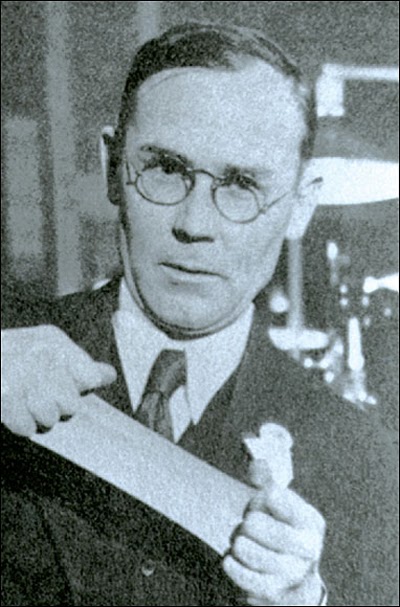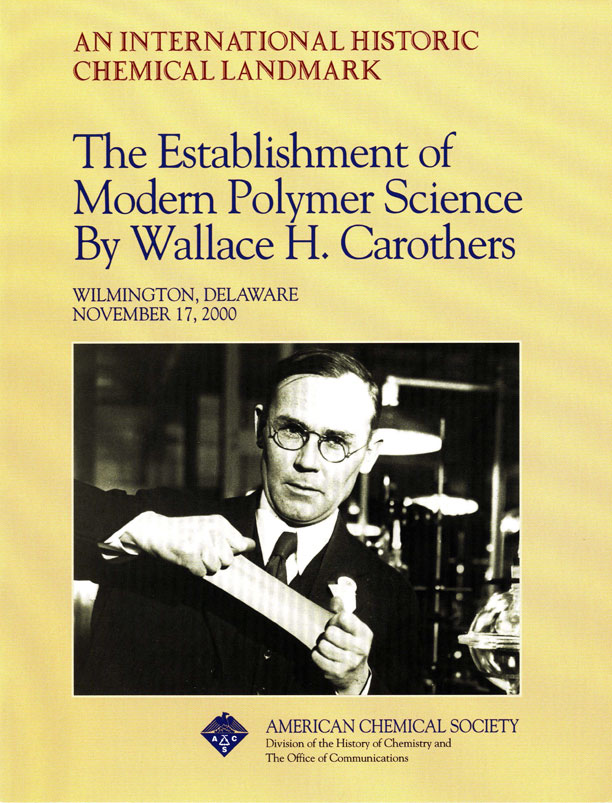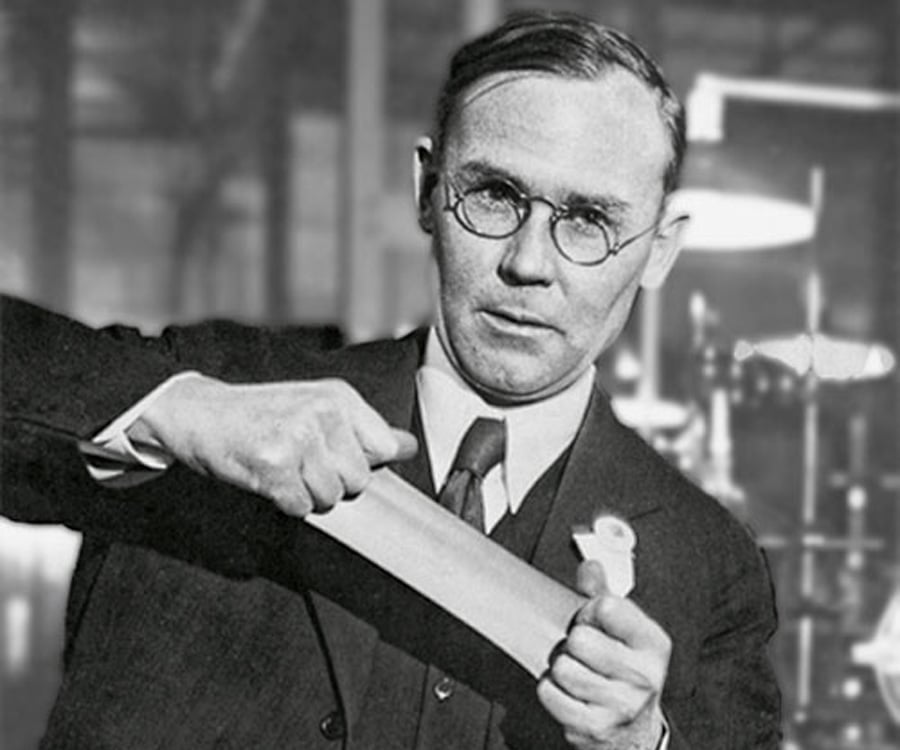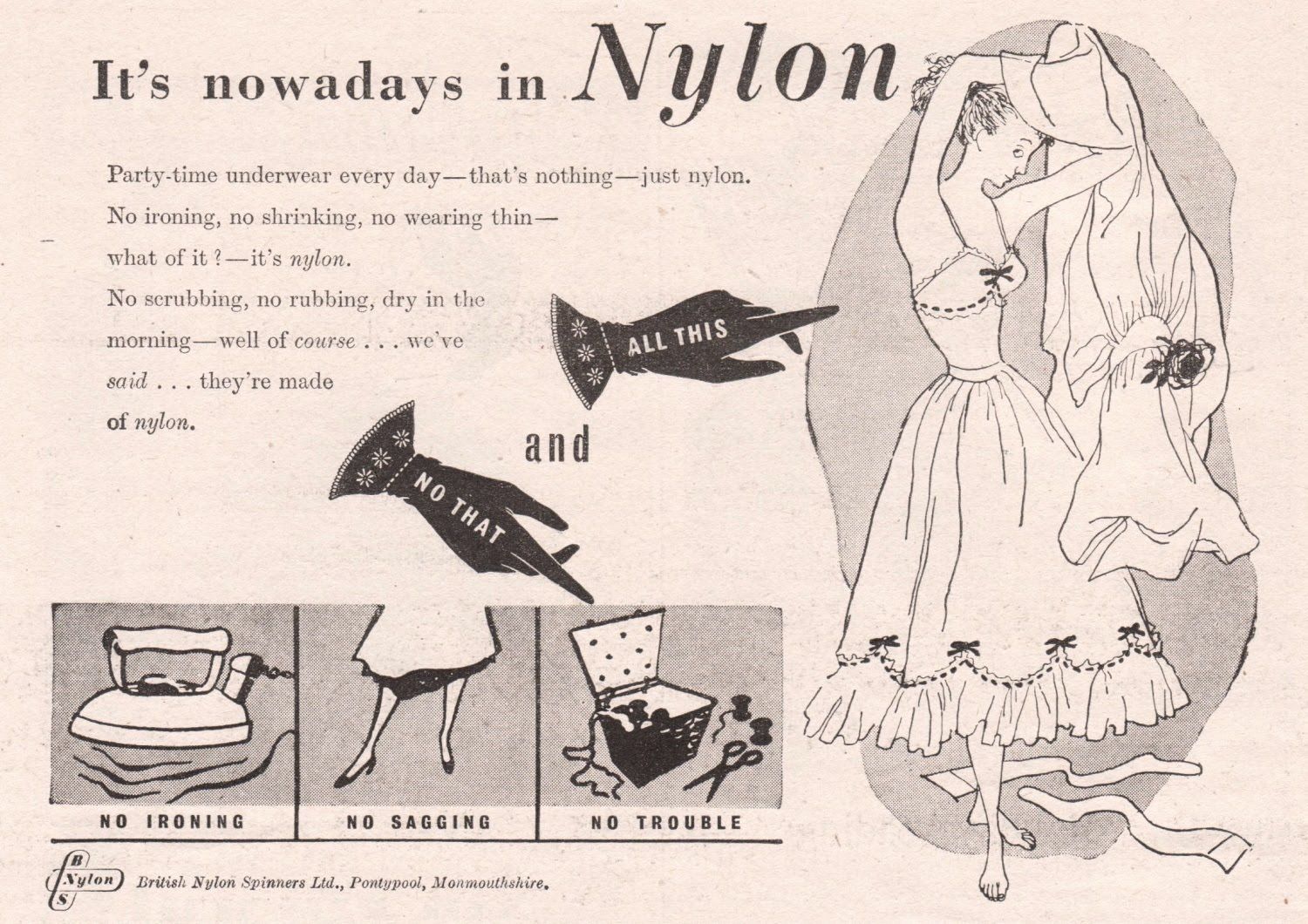Carothers Nylon



Who invented nylon? Photo: Chemical laboratory courtesy of NASA Glenn Research Center (NASA-GRC).. Everyone’s heard of nylon, but hardly anyone outside the world of chemistry knows the name of Wallace Carothers (1896–1937), its brilliant, enigmatic, and ultimately tragic inventor.


In 1928 E. I. du Pont de Nemours & Company (Du Pont) launched one of its first basic research programs and hired Wallace Hume Carothers to run it.


Wallace Hume Carothers (27 de abril de 1896 – 29 de abril de 1937) fue un químico estadounidense, inventor y líder del departamento de química orgánica de DuPont, se le atribuye la invención del nailon.

Jul 07, 2011 · Introducción El nylon es un polímero artificial que pertenece al grupo de las poliamidas. Se genera por policondensación de un diácido con una diamina.
Nylon: Nylon, any synthetic plastic material composed of polyamides of high molecular weight and usually, but not always, manufactured as a fibre. Nylons were developed in the 1930s by a research team headed by an American chemist, Wallace H. Carothers, working for E.I. du Pont de Nemours & Company.
Our Company . See what makes DuPont one of the most successful science and engineering companies in the world. > Values
O náilon (ou nylon) é um nome genérico para a família das poliamidas, sintetizado pelo químico chamado Wallace Hume Carothers em 1935. [1] Foi a primeira fibra têxtil sintética produzida.

Nylon is a generic designation for a family of synthetic polymers, based on aliphatic or semi-aromatic polyamides.Nylon is a thermoplastic silky material that can be melt-processed into fibers, films or shapes.
This year marks the 80th anniversary of the invention of nylon. As ubiquitous a material it may be nowadays, you may be unaware of how revolutionary nylon was when it first hit the market, or the tragic story behind its creator. In the mid 1930s, several DuPont Chemicals scientists led by Wallace
Teflon and nylon are the most common polymeric engineering materials which are used to manufacture washers. They are versatile and flexible polymers. Nylon polymers are produced by reacting an amine and dicarboxylic acid while Teflon is produced through the polymerization of tetrafluoroethylene.

